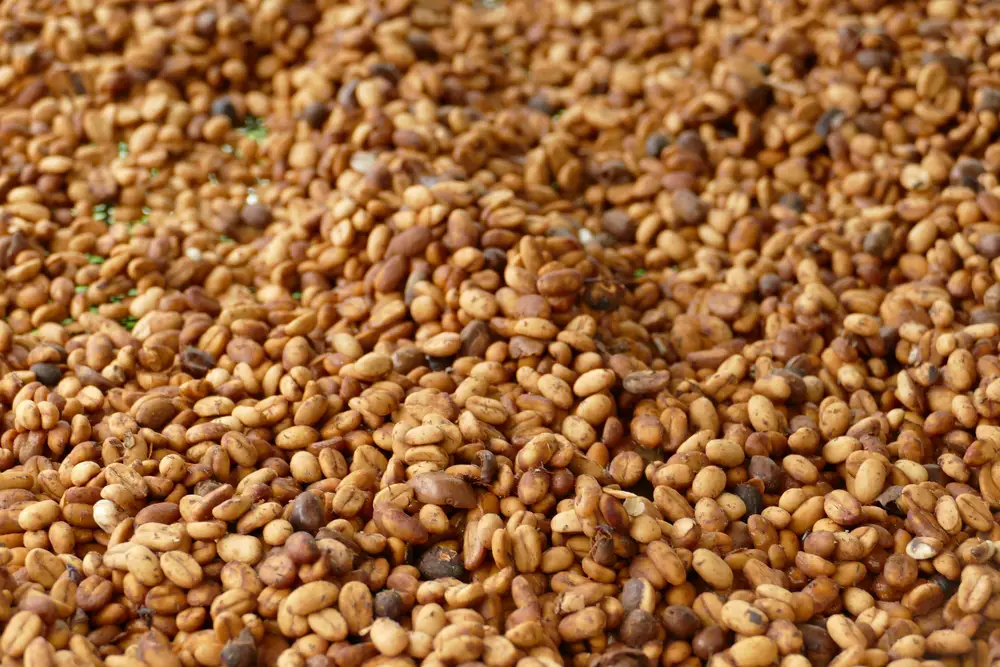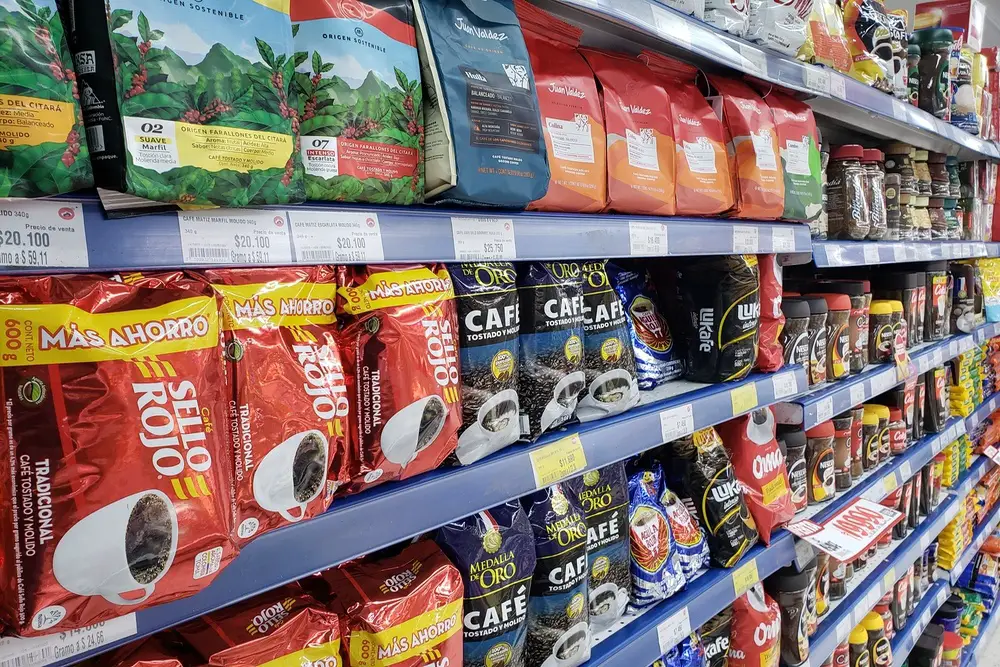In Saudi Arabia, coffee is not only an ancient drink considered a tradition of hospitality, but also an important source of income and economic development in the region. With the recent opening up to tourism, coffee is becoming one of the most interesting attractions.
Table of Contents
Coffee and the Saudi Arabian Market
Although the volume of coffee exports from Saudi Arabia remains insignificant, there is potential for growth in production volumes.
A 2017 research found that with the right resources and infrastructure, the Saudi coffee industry could increase its global market share by 2%. The researchers also concluded that coffee production could be expanded, especially in the southern and southwestern regions of the country.
By the end of 2021, around 400,000 coffee trees had been planted on 600 farms nationwide, capable of producing around 800 tons of coffee per year. In addition, as part of Vision 2030, the Saudi government aims to plant 1.3 million coffee trees by 2025 to increase production and establish direct business relationships with small farmers.
The need to increase coffee production
- One of the best-known initiatives is the Saudi Arabian government’s “Vision 2030,” which aims to diversify the country’s economy to make it less dependent on oil exports.
- As part of this initiative, the government announced the Saudi Coffee Year 2022, which also aimed to encourage local coffee consumption. Under the program, the Saudi government planned to grow around 5,000 tons of high-quality coffee annually, which it plans to export on a large scale by 2040.
- The number of specialized bakeries and coffee shops in the country is growing, as are organizations like the newly formed ICA.
- The institute now runs Arabic coffee courses to educate local coffee professionals and consumers, and to educate the international market about the different growing, processing and brewing methods in the Middle East.
Business support for coffee production
Saudi Coffee Company recently signed an investment agreement with Jubail and the Yanbu Royal Commission to build a 30,000 square meter coffee warehouse in the city of Jizan.
Currently, 300 tons of coffee are produced annually in Saudi Arabia. That number is set to increase to 2,500 tons by 2032, an increase of more than 700 percent. Modernization will also focus on more sustainable and local value chains.
The Saudi Coffee Company also plans to open 25 coffee shops around the world as part of its five-pillar strategy to improve the coffee industry in Saudi Arabia. According to Kingdom, the second pillar will focus on coffee roasting and packaging. The company will create an open platform that will allow local and global brands to scale up production without investing in their own facilities.
to be the proposed $319 million new Jizan coffee warehouse. This will bring Saudi Arabia closer to the global coffee world and provide access to around 2,500 Saudi farms. The kingdom also hopes to provide young Saudis with an education in coffee production and processing.
Several Jizan investors including Saudi Coffee Co. and United Feed Co. have signed investment and construction contracts for various plants.
Public investment in Saudi coffee production
Saudi Arabia has invested in expanding coffee cultivation and processing in the southwestern region of Masuka, Bahá.
The Ministry of Environment, Water and Agriculture signed a 15-year contract with the Baljurashi agricultural cooperative to plant more than 300,000 Arabica coffee and pomegranate seedlings on 1.7 million hectares in the village of Bahá Mashuka.
The area also includes a demonstration farm, an integrated nursery for the cultivation of coffee seedlings and an industrial area with processing and roasting facilities.
in the province of Khizan in south-western Saudi Arabia. In 2019, an estimated 336 tons of coffee were produced in this region.
The challenges for the Saudi Arabian coffee industry
- At the end of the 20th century, the country shifted its focus to making oil the main export of the Saudi economy. As a result, many people have given up growing coffee in favor of other, more profitable industries, so production has declined significantly and some farms have been abandoned.
- The global rise in temperature is having a negative impact on Saudi coffee production. In December 2021, Arab News reported that the coffee farms around the city of Jizan are among the hardest hit in the country due to low rainfall.
- The coffee farms in Saudi Arabia are often located on steep slopes, making it difficult to install proper irrigation systems.
- In addition to climate-related problems, production has been hampered by a lack of formal coffee knowledge and a lack of investment in technical support. Many Saudi coffee farmers lack access to research, agricultural best practices and cutting-edge agricultural technology, which has hampered significant development in coffee production.
- However, quantity and quality are likely to increase in the future as the government increases coffee production in Saudi Arabia.
Preservation of traditional Saudi coffee production
An ambitious group of farmers in Saudi Arabia are working to preserve traditional coffee cultivation in the face of cultural and climatic change.
Khawlani, an Arabica coffee variety, on the slopes of the Yazan Mountains in southwestern Saudi Arabia for almost 300 years. The hardest part about growing coffee is the physical labor, confirmed one member of this group of farmers.
His operation has tried to combine traditional techniques with modern methods. His son sells the coffee on social media platforms and has helped build a brand that has attracted shoppers from the UAE and Kuwait.
There are small picnic areas where guests can picnic among coffee, fig and banana trees. Six groups visit the site daily, including a visitor from Côte d’Ivoire.
A 2017 article in The Daily Telegraph ranked Saudi Arabia as the 10th largest coffee consumer.
The centerpiece of Saudi coffee culture has traditionally been the dallah, a parrot-funnel coffee pot made until the 1960s and served on a skewer over an open fire.
Sometimes referred to as latte, coffee is served in multiple servings at the reception of restaurants/shops and is served in small cups, usually with dates, as part of hospitality. The coffee is traditionally flavored with cardamom, cloves, cinnamon and saffron, which gives the coffee a golden color.
In the verdant region of Jazan, more than 79,000 khawlani coffee trees grow clinging to the hillsides. In the second half of the 20th century, the region began to move away from coffee as its economic base as the economy became dominated by oil, another black substance with a golden tinge. As farmers became soldiers or bureaucrats, the number of coffee farmers dwindled to a few hundred.
Local coffee culture
Nowadays it is difficult to buy coffee beans; there is only one specialty roastery that sells coffee to outsiders.
But there are always local Dallah coffeemakers everywhere, serving diners a cup or three of ultra-light Saudi Arabian coffee. It was considered impolite even to speak to guests before offering them a cup of freshly brewed coffee for the first time, and coffee was also used to close deals and even arrange marriages.
- Saudi coffee farmer Ahmed Bani Malik stocks Khawlani coffee at his farm on the edge of the Saudi -Yemeni border in Jizan, southwestern Saudi Arabia.
- The trunk of the tree used to grind the coffee is still called mufarreh, meaning “fountain of joy” because its rhythmic, monotonous clattering signaled to Bedouin herdsmen and farmers that someone in the village was preparing a drink and that they were happy about it.
- Bani Malik Farm, located outside a military checkpoint in a valley near the mountain range between Saudi Arabia and Yemen, demonstrates some of the promises and challenges of selling Saudi beans.
His oasis of mangoes, papayas, flowers, herbs and 5,000 coffee trees have plenty of water, but like many coffee plantations, it’s near or in a Yemeni war zone. - The small processing plants in the region are often run by local residents who offer bags of ground coffee; in other coffee-growing areas of Saudi Arabia, there are no profits at all. Sorting coffee is expensive.
A look into the future of Saudi coffee production.
- In the long term, several programs will be implemented to support farmers in the areas of training, organic certification and coffee marketing. Saudi Arabia has also campaigned to protect coffee production.
- In 2019, the Saudi Society for the Preservation of Cultural Heritage applied to UNESCO to protect traditional Saudi Arabian Khawlani coffee production methods. Khawlani coffee beans, named for the tribes that first grew them, are among the most prized coffee beans in the Middle East.
- Traditional farming practices for Khawlani coffee are often passed down from generation to generation, meaning there are no formal and well-documented farming practices.
Conclusion
Although the specialty coffee industry in Saudi Arabia is still in its infancy, it has enormous growth potential for the coming years.
With continued government and private sector support, the country is likely to become a major player in the global coffee industry.



